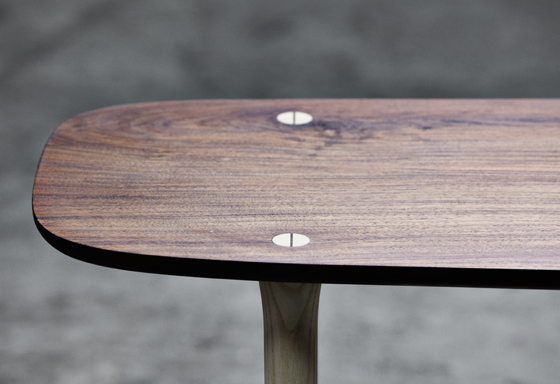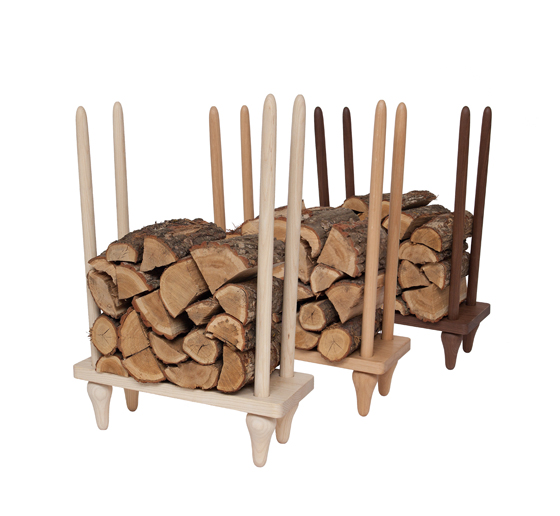Soul Man: Ask Emil Skovgaard
Texto por Simon Keane-Cowell
Zürich, Suiza
26.10.12
If the Slow Design movement were looking for a poster boy, Ask Emil Skovgaard would undoubtedly be on the shortlist. Treading a fine and virtuosic line between design, craft and art, the Copenhagen-based creative’s work is, among other things, an expression of pure material joy and a comment on the, often compromised, value of fast-paced production. Architonic talks to the Skovgaard about his patient approach.
The filigree joinery of Ask Emil Skovgaard's 'Cloud' table speaks of the time invested in its fabrication
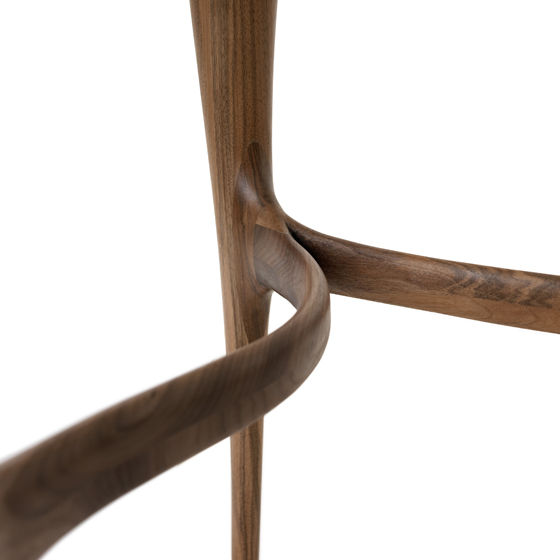
The filigree joinery of Ask Emil Skovgaard's 'Cloud' table speaks of the time invested in its fabrication
×There’s something fitting about Danish creative Ask Emil Skovgaard’s atelier being located behind Copenhagen’s old vegetable market. It you had to choose one adjective to describe the aesthetic of his decidedly sculptural pieces – which encompass tables, chairs and a range of artworks – it would probably be ‘organic’.
With wood as his material of choice (‘Wood is the perfect material because it is so imperfect’), Skovgaard spends time – and the operative word here is ‘time’ – distilling his formal ideas and expert craftsmanship into objects that speak of the labour and love that has gone into them. They wear their genesis on their soulful sleeve, so to speak, showing the fact that their coming-into-being wasn’t hurried or driven by production targets, but instead the result of significant consideration and considerable, technically flawless handwork.
'Cloud' table by Ask Emil Skovgaard, made of walnut and padauk: 'Things take time and good things take good time,' says the designer
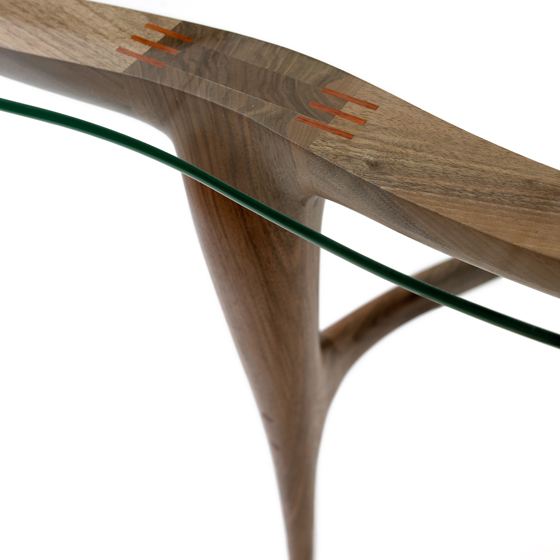
'Cloud' table by Ask Emil Skovgaard, made of walnut and padauk: 'Things take time and good things take good time,' says the designer
×Take the filigree form of his walnut and padauk, glass-topped table, whose joints’ effortless appearance belies the complexity and sheer expertise involved in their construction. Viewed from a distance, the table has a fluid, almost graphic semblance, as if it were sketched by hand in a minimal number of strokes. Closer inspection, however, draws you into a compelling world of design detail and technical wonder. ‘Things take time,' says Skovgaard, 'and good things take good time.’ Witness his ‘Cloud’ table, which takes an impressive 120 hours to produce.
Skovgaard's 'Mergo' desk and 'Kora' chair, both of which demonstrate the Dane's passion for working in and with wood, as if a collaboration with the material, rather than a controlling of it
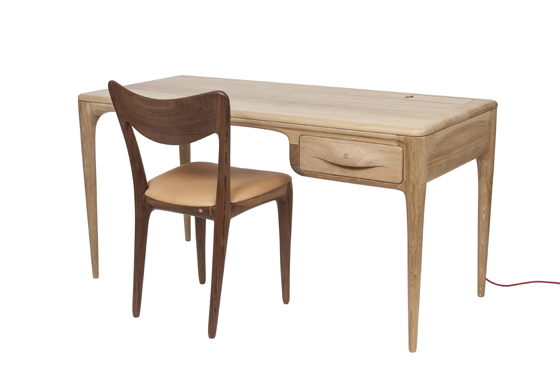
Skovgaard's 'Mergo' desk and 'Kora' chair, both of which demonstrate the Dane's passion for working in and with wood, as if a collaboration with the material, rather than a controlling of it
×The 'Kora' chair has been Skovgaard's most difficult design to realise to date, requiring the creation of a special, uneven double mortise-and-tenon joint and a custom-made router
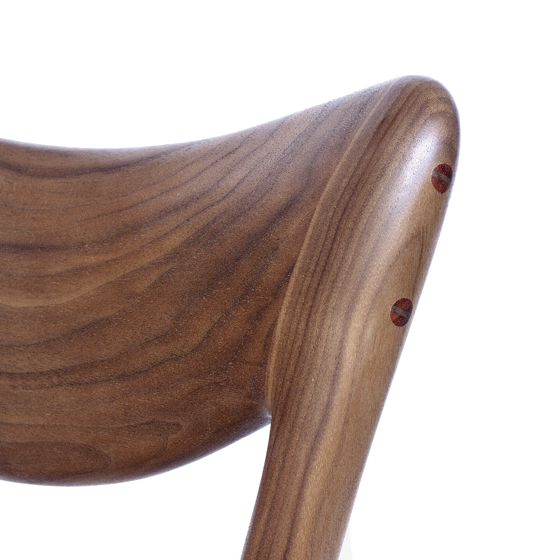
The 'Kora' chair has been Skovgaard's most difficult design to realise to date, requiring the creation of a special, uneven double mortise-and-tenon joint and a custom-made router
×Given the virtuosic quality of his work – in no small part the result of his training in cabinet-making at Copenhagen’s Technical School and in furniture design at the Danish Design School – it’s somewhat surprising to hear Skovgaard talk about his designs as if he weren’t the agent of their creation. ‘I like organic furniture that looks as though it was made by nature itself – without stress,’ he explains. Modesty, maybe, but there is a definite sense of naturalness about the objects Skovgaard hones, both in the way in which they respond to their materials and eschew the formal dictates of fashion.
Want to see for yourself? With a joint exhibition of Skovgaard and lighting designer Tom Rossau’s work due to open next week in Copenhagen (details below), now’s the time to take time to join the slow revolution.
Skovgaard's beech and leather 'Ribbon' chair: 'I use certified materials, such as wood, leather, glue and so on, as much as possible'
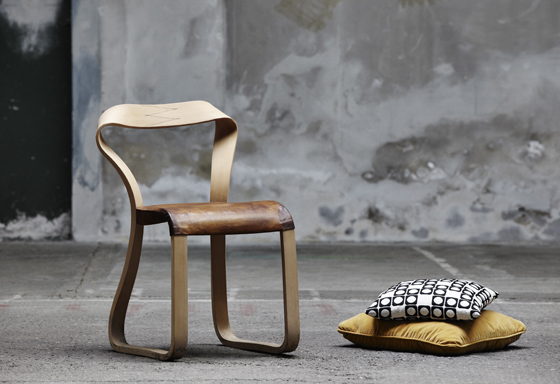
Skovgaard's beech and leather 'Ribbon' chair: 'I use certified materials, such as wood, leather, glue and so on, as much as possible'
×....
Would you describe yourself first and foremost as a designer, an artist or a craftsman? How important are these terms to you?
I’d say all of them at the same time. When I do art, I design as well. When I design, I use my artistic sense and I always use my skills as a craftsman. Maybe I should call myself an artistic craftsman, and in the field between art and craft, the designer emerges.
How different is your creative approach and your process when producing a design piece from that of an artwork?
It is almost the same, but the function is different. A design object has to be functional on a physical level, whilst the art piece has its function on a more subtle level. It has to talk to a more indefinable place in the individual. When I do art, I also work from that place within myself. I work more freely and intuitively than when I design.
When I design, I am considering many technical issues, but then again when I do sculptures I also have to figure out how to build them. In both cases I use my intuition a lot. I don’t just design with my head. I use all my senses.
'Six Legs' table with 'Kora' chairs: 'The quality of materials and craftsmanship is really high, so I imagine that people will own them for many years'

'Six Legs' table with 'Kora' chairs: 'The quality of materials and craftsmanship is really high, so I imagine that people will own them for many years'
×There's an organic, nature-inspired aesthetic to your work, particular in terms of form. How essential is this? Do you think you could use the same materials, the same processes and techniques and work to a completely different, non-organic idiom?
When I build an organic piece of furniture, I make some mock-ups of legs and so on. When I´m pretty certain it´s going to work, I start cutting up the wood for the actual furniture, but I don’t finish the shape until all the joints are glued. That way, there is a special stage in the process that is a bit like that a sculptor would engage in. If I do a straighter piece of furniture, the process is the same apart from that last stage. The materials are based on the customer’s request, or what I intuitively feel is right, whether it’s organic or not.
Your pieces seem to display clearly the time that has gone into creating them. Why do you value this? Can good things not also be created quickly?
Yes. Good things can be created quickly, but there tends to be a special aura around objects that have taken a long time to create. Why I don´t know. Maybe the creator puts a little of his or her soul into it, and the longer it takes the more soul gets put into it.
Detail of 'Hallway Table', made of East Indian rosewood and ash
Which of your designs has been the most difficult to realise and why?
The day bed I built as a graduate project from the Danish Design School was difficult because I was too occupied with the idea that it had to be perfect, combined with my lack of confidence as a novice designer. That made my think too much about hundreds of solutions instead of trusting my instinct. Today I work more freely and am not so afraid it´s going to go wrong. Funnily enough, it tends to get better that way. And if it sometimes doesn´t, I don’t worry so much about it. That said, I’m still a bit of a perfectionist, but you have to be in my line of business if you want to achieve something.
Among the newer projects, the ‘Kora’ chair was difficult, even though it looks simple. I made it for the glass table now called ‘Cloud’, and I made three totally different prototypes, before deciding on an iconic chair shape. Then I made five new prototypes, each with different proportions. I wanted to make the most beautiful yet comfortable chair I possibly could. I decided to build eight chairs, but this small-scale production turned out to be very challenging. I had to create a special uneven double mortise and tenon joint, to give it the strength needed to make it without a stretcher. And all the joints have weird angles so all the machine set-ups took a long time. I made about 50 templates, plus a custom-made copy router, to create all the elements for the chair. But it was worth it. I´m really satisfied with this piece.
Wood on wood: 'Firewood Rack', fashioned in beech
Do you envisage your users when creating your more functional pieces, such as tables and chairs?
When deciding on all of the elements that relate to function, I do. I also have a sense of the person when I shape the piece. I don´t know if it makes the piece match the person better on an aesthetic level, but I would like to believe so.
What's the relation between your work and sustainability?
I use certified materials, such as wood, leather, glue and so on, as much as possible. But I think what makes my furniture especially environmentally friendly is the fact that the quality of materials and craftsmanship is really high, so I imagine that people will own them for many years. And if they want to change their interior one day, they will probably sell or give it away, rather than throwing it away.
Above: Skovgaard works out of an atelier behind Copenhagen's old vegetable market; top: maple veneer and mahogany constitute the 'Five Legs' chair
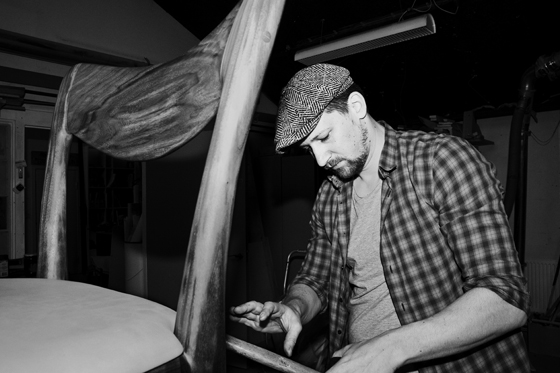
Above: Skovgaard works out of an atelier behind Copenhagen's old vegetable market; top: maple veneer and mahogany constitute the 'Five Legs' chair
×What motivates you?
I´m not sure. I think it´s an internal drive to create something beautiful and unique. I like to walk in a big national park north of Copenhagen, where there are a lot of old trees. Trees that have died and are lying on the ground are left there to rot. There are many beautiful surfaces, colours, textures and shapes on these old trunks. I also like to look at old buildings made of natural materials, especially factories and other practical buildings like boat sheds and lumber yards.
What do you dislike about design?
I don´t like what I call ‘Hollywood’ furniture. Furniture that is made from the outside in, as opposed to from the inside out. It is superficial, made to be modern and sells well. But it lacks the passion of the creator and doesn’t have a soul.
What would you be doing if you weren't an designer/artist?
I would probably be playing music full-time. I already write songs, and I have a small band with which I play concerts in the Copenhagen area.
....
....
Exhibition
Ask Emil Skovgaard and Tom Rossau
Tom Rossau Woonvinkel
Frederiksberg Allè 5
1621 Copenhagen V
Denmark
1 November to 29 December 2012
Tuesday to Friday: 11.00 to 18.00
(Wednesday until 20.00)
Saturday: 11.00 to 15.00








